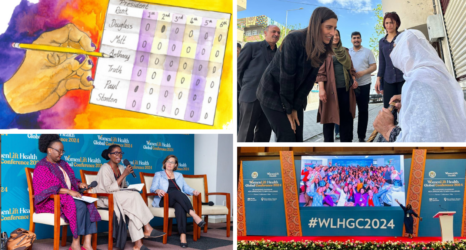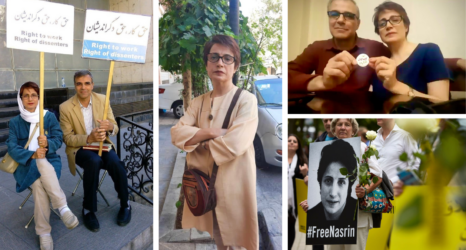The common thinking in many Western European countries such as Germany or the Netherlands is that immigrants don’t integrate—that they refuse to learn the languages dominant to their new hometowns, and turn their neighborhoods into “ghettos” with Turkish and Moroccan businesses. Contributors to mainstream newspapers in the Netherlands question whether Syrian parents teaching their children Arabic could hamper integration; in Denmark, children in certain areas are separated from their parents for a large chunks of their weeks and sent to daycares to learn “Danish values.”
This type of thinking mistakes integration, the notion of belonging in many places, with assimilation, which means letting go of one’s background and only accepting the majority culture. Those immigrant-owned shops, cafes and storefronts, and the products in mainstream supermarkets that come from other places, are exactly what integration is all about. And a lot of it lies on the shoulders of women.
Women drive integration. They cook the food of their countries. They create, maintain and pass down family traditions. They are often rearing their children—teaching them languages, taking them to the doctor and building community around them.
Research shows, for example, the importance of a solid base in the mother tongue as a crucial part of bilingualism, and because the wellbeing of children suffers when their languages and cultures are not widely accepted, it’s a crucial task to uphold it. In many cases, it’s also women’s work.
This type of work is known as emotional labor—coined by Arlie Hochschild in The Managed Heart. The Commercialization of Human Feeling, the term refers to the ways in which women are expected to manage their own emotions and behaviors in order to make others more comfortable.
As an immigrant woman from Poland, I am intimately familiar with this concept. A teacher at my daughter’s daycare once told me that she should not speak Polish to other children who spoke the language, arguing that it could harm her development. This woman notably had no issue teaching the children songs in English. That is not a singular incident. It happens all the time. Immigrant parents are often asked to speak the majority language with their children, or to participate in cultural traditions they may not agree with.
Immigration itself is often an act of emotional labor. Immigrants aren’t just required to perform emotional labor at work in service jobs—they’re required to make everyone feel more comfortable around and about them. A study of Chinese immigrants in Canada described the ways immigrants try to bend over backwards to fit in; while the participants were largely male, the gendered nature of emotional labor leaves no doubt that women shoulder a much larger share of that work.
A new study by the European Commission showed that women were facing double discrimination—as women and as immigrants. They face worse health and employment outcomes, especially if they come from non-EU countries. This isn’t surprising: Across the world, immigrant women are treated as expendable—and are often abused, mistreated and threatened. They work in industries that aren’t valued. Their children are often referred to as loud, rowdy and “problematic,” and their culture and primary language are wielded as weapons against them.
The war on immigrant women is not a fight for integration—it’s a battle for exclusion and dominance. Nevertheless, however, immigrant women persist. Immigration is not easy work, and the women reconciling new identities, communities and experiences foster the successes of entire families and communities. They drive integration—and, along with it, economies and progress.
This isn’t a liability. It’s a superpower.





